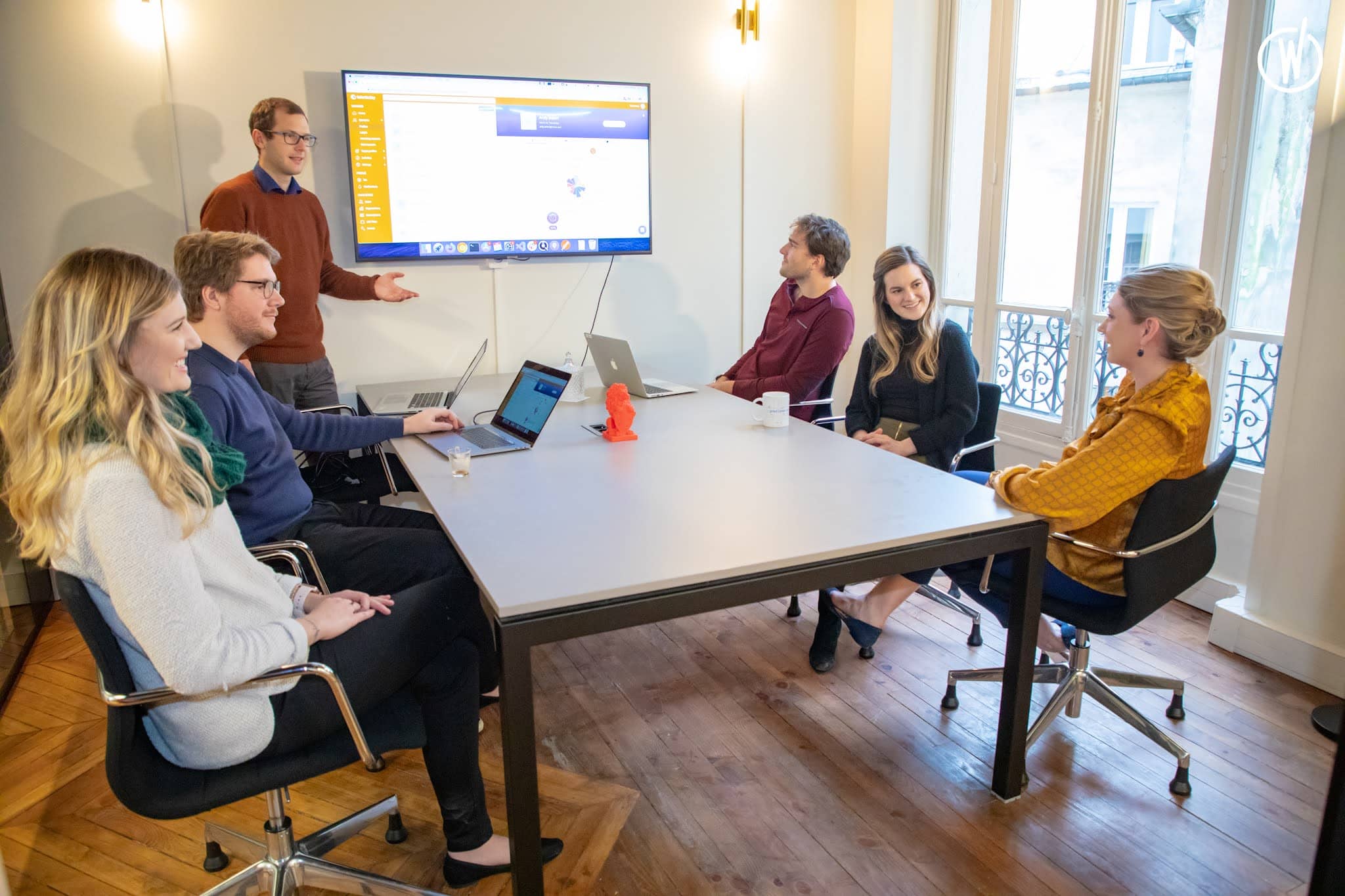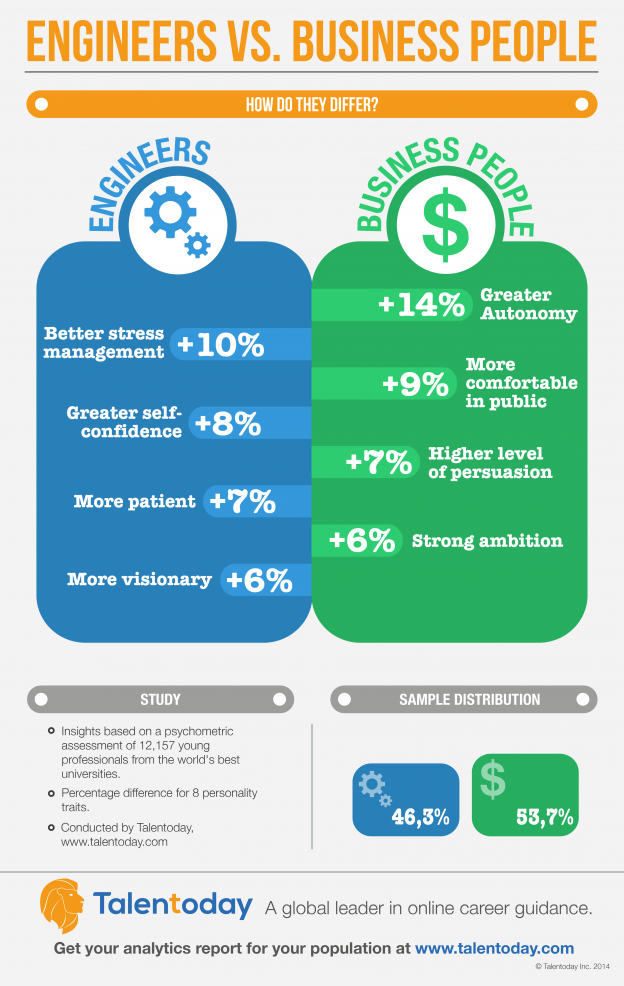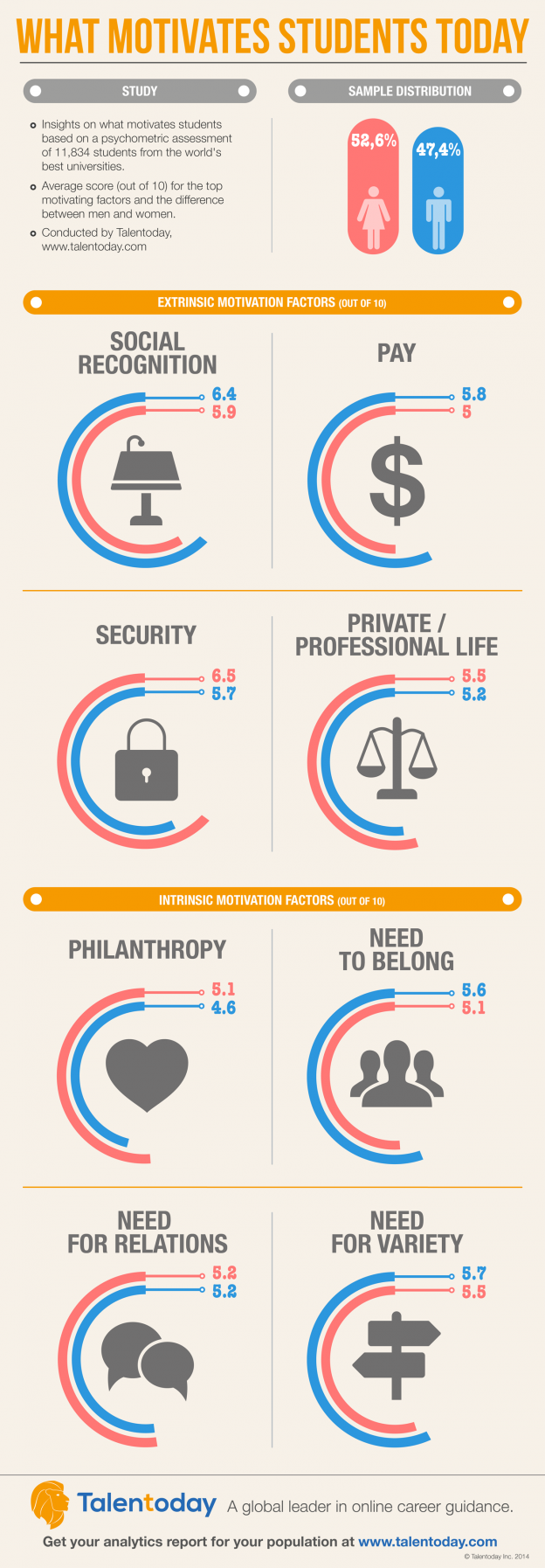In Pursuit of Happiness: My Lesson in the Importance of Measuring Motivation
For as long as I can remember, I have had an insatiable urge to maximize my potential for achieving a meaningful and happy life. My mom will recount stories of gritting through the parent-teacher conferences of my adolescence with my teachers cautioning her to put “less pressure” on me due to the intensity I brought to spelling tests and class projects. My mom would assure them that there was no pressure; it was all driven by a little fourth grader with an intense motivation for personal achievement.
Over the years, the devotion to fulfillment of potential never waned. I found myself driven by achievement, influence and responsibility, and I had successfully scouted out professional and educational opportunities to satisfy that. However, I approached a pivotal point in my personal growth when I was by all appearances in the prime of my career, building a life in the United States with a wonderful partner and our loving, loyal pets, leading teams of brilliant people while also pursuing a graduate degree to deepen my business acumen. Yet, somehow, something was missing. As I reached a point along the path I had been going down for years that was supposed to open me up to more in life - more opportunities, more success, more joy, it hit me.
I had been misdiagnosing my motivation. Somehow during the years of chasing personal achievement, my motivational needs evolved. With unique perspectives and education in my toolkit, my new driving force was combating complacency, seeking out new challenges and adventures. My previous solutions for happiness and fulfillment were no longer going to suffice. The cure was taking a hard look at not only who I was, but who I had become, and who I might become next, to truly identify the drivers and motivations that would lead me to a content and happy life.
Defining Motivation
Motivations are often defined as the desires and needs that help determine how an individual behaves. Examples of motivations can include external things, like receiving recognition for your work, or internal factors, such as working on projects that challenge you. When these different needs are met, we become more engaged. This leads to more energy, commitment and creativity, as well as higher levels of productivity and satisfaction.
Motivation is most often discussed in professional settings, and with good reason; companies are always searching for new ways to encourage their employees to achieve more. However, recent research from Gallup indicates that about 80 percent of the global workforce is not engaged in their work. The cost of this mass malaise goes well beyond dollars and cents, with effects that touch our lives outside of the workplace, as well.
Motivations Mean Something Different for Each of Us
In the spring of 2019, I had just finished earning my executive MBA and was ready for a new challenge. After more than a decade spent building my reputation as a detail-oriented marketing professional, I needed to add some variety and excitement to my career. The previous summer, Medix, the U.S.-based workforce solutions company I had spent my entire career with up until that point, had acquired Talentobe, a science-driven people analytics company headquartered in Paris, France. It was a bold step forward for a company I thought I knew like the back of my hand. Was this new opportunity the spark I had been searching for? Ready to take on a new adventure, my husband and I packed up our bags and our pets and made the move from Chicago, Illinois to Paris.
Throwing caution to the wind to cross the Atlantic was energizing and fulfilling for my need for personal challenge. Working with individuals who had different backgrounds than my own and taking on obstacles that I had never faced was by definition challenging, but thrilling at the same time.
At that time, I also came to the realization that this wouldn’t have been the case for everyone in this same scenario. Another professional who was instead motivated by consistency in procedures, attainable goals or predictable environments might have struggled with such a dramatic career change. To me, the lesson was clear. If most companies give employees frequent recognition, bonuses or other types of incentives, then why are the majority of us not engaged at work? This is where things get personal. In order to properly motivate someone, you need to know what it is that inspires them!
Share Your Motivations!
Whether you are setting professional or personal goals, there are the standard questions that are covered on a regular basis. How much do I need to earn to live comfortably? How hard do I need to train to hit my fitness goals? What’s my five-year plan?
Unfortunately, we very rarely ask ourselves direct questions about whether we are feeling fulfilled and, if not, what the factors are that are discouraging us. Only after identifying our core motivations can we turn this attention outward in order to inspire and encourage those around us.
Being transparent about our differences in motivations is an essential first step to better engaging with those around you on their own terms. Sharing individual needs and making that a regular part of the conversation is going to not only help your colleagues and loved ones feel seen and heard, but it’s a practice that promotes wellbeing in every facet of life.
People Change, and So Do Motivations
When I first moved to Paris, I was invigorated by my new environment. I was taking on a new industry in a new country with a new team. However, within a few months, I started to experience that feeling again that something was missing, that something was holding me back from true happiness. I knew I couldn’t give my best effort to those counting on me without figuring out what needs weren’t being met to ensure personal fulfillment.
Working at Talentobe, I thankfully was surrounded by resources dedicated precisely to this mission. I had access to an assessment built on the science of psychometrics designed to unearth insights on your personality, motivations and behaviors as an individual. When I had first stepped into my new role, I had taken the assessment to get a better sense of our product offering. To my surprise, I actually ended up learning a lot about myself along the way. After retaking it, I learned something new - people change, and so do our motivations.
While I was once motivated by change, my heart and science were telling me these needs had evolved. With a major life and career shift satisfying my previous need for challenge and excitement, my need for a sense of belonging grew. When I was back home in the U.S., it was effortless for me to pick up the phone to check in with my mom or grab lunch with a friend. Now, with an ocean between us, that was no longer possible. Once I realized what was missing for me in France, I focused on creating that sense of family I was longing for with my new teammates and put more effort into regularly keeping in touch with my loved ones back home.
Human beings are constantly evolving with their environment, and the same goes for our motivations. This is why it is important to continuously check in with ourselves, the people we work with and those who are with us at our most vulnerable moments to ensure that we are adjusting along with these evolutions. Changes in perspective can also lead to changes in priorities. Once you’re cognizant of this and make a point of keeping your finger on the pulse of these motivations, you’ll be more successful in regulating your environment, activities and life to achieve true happiness and fulfillment.
This article originally appeared on the Bonjour Sophy blog. Bonjour Sophy, a Talentobe partner, is a program that helps individuals discover their life mission. Learn more by clicking here.
How to Conduct a Soft Skills Interview in 4 Easy Steps

If you have been following our blog then you know how important we think soft skills are to incorporate into your daily work lives.
“Hard skills will get you the job, but soft skills will make you successful.” -Me, at least 3 times per week
However, sometimes this can seem overwhelming. Where should you, as a manager, start? In this blog article we will take a step-by-step look at how to use soft skills from the very beginning of the employee lifecycle: the interview process.
Step 1: The Job Requirements
At first glance, you might think you know what goes into a position. Maybe you have been hiring for this position for quite some time, or you have worked with individuals in this role before. Although you might think you know all of the important requirements for a role, it is still important to take the proper steps to evaluate a job description in order to make a more informed decision on what the role entails.
Once you have determined what hard skills and qualifications are necessary for a position, it is time to determine what soft skills will help someone be successful in this role. There are many ways to find this information. Here are a few of the common ones:
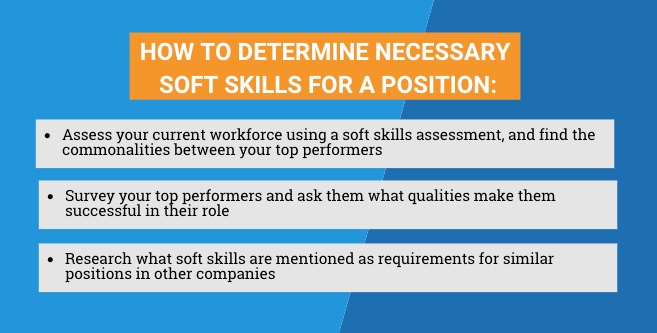
It is very important that you are using a scientifically reliable and valid method to assess your teams’ soft skills. For the purpose of this article, we recommend using the MyPrint® assessment to assess your current workforce and using some of our tools available through Talentobe Manager to determine what to look for during the interview process.
An important note here: although you are looking for commonalities among your top performers, that does not mean that you want a cookie cutter of those individuals. One of the most important things for a team’s success is having diversity among group members to help fill in skills gaps and increase creativity and innovation¹.
Step 2: Preparation
Now that you have determined what the important soft skills are for the position, you need to prepare for the interview. Having a set interview process helps to ensure that you are making more informed decisions for your company and not using personal judgments or unconscious biases when hiring. Topgrading² is one example of an interview methodology that is intended to help identify top talent, and incorporating soft skills into this methodology is seamless.
Prior to the interview starting, you will also want your candidates to complete a MyPrint® assessment (check that their results are from the past 6 months to ensure accuracy). Make sure that the hiring manager and anyone involved in the interview process have taken the time to review the candidate’s MyPrint® One Pager (soft skills summary) and are familiar with the soft skills that have been determined important for the role.
To prepare for the soft skills portion of the interview, we recommend that you have the Premium Report version of the candidate’s results handy and review their top 3 personality strengths, motivators, and behaviors (as shown on the One Pager report). Then ask yourself the following questions:
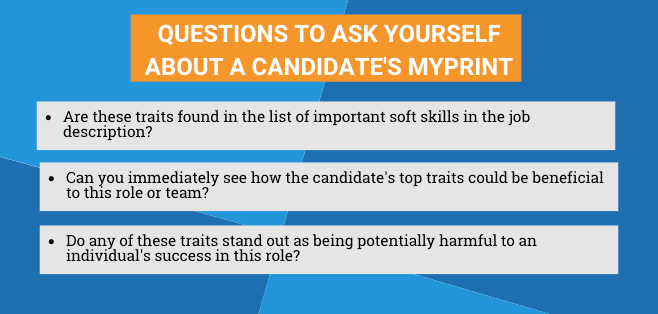
Lastly, take a look at the candidate’s behaviors. The MyPrint® Premium Report has two interview questions tailored to each behavioral style to help gain a better understanding of how that individual showcases those styles. Make a note of any behaviors that you would like to dig deeper on, and have those interview questions ready to go!
Step 3: Conducting the Interview
When conducting a soft skills interview, it is important to stay open minded. If someone’s top three MyPrint® traits aren’t the exact three that you are looking for that does not mean they are not going to be a good candidate. Instead, look at their Premium Report to see where they fall on the scale for each of those traits. Take the time to ask questions around those topics, and make sure that you are being clear about the role expectations and see if that matches what they are looking for.
Step 4: Scoring the Interview
Once the interview is completed and the candidate has left, it is not time to make a decision quite yet! Take the time to review your interview notes and apply some quantitative metrics to what you were looking at.
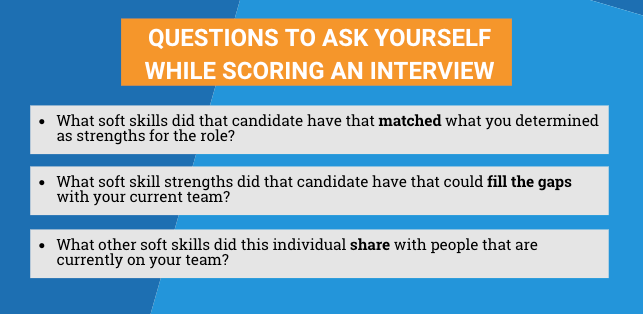
To ensure fairness between candidates, use a standardized method of scoring the interviews. Grading methods can include ranking responses or finding the difference between ideal scores and actual scores in their MyPrint® scales.
To Sum It All Up…
Using soft skills in the interview process can help you make more informed hiring decisions, and help you find candidates who will be more successful in their role. The interview process is an investment for everyone involved, so it is not something that should be done without careful evaluation and purpose.
Remember to be open-minded when it comes to soft skills; you won’t have all of the answers right away. As you gather more information over time you will learn more about what personality traits, motivations, and behavioral styles can be attributed to success in a role and sometimes, what you find might surprise you!
Want more information about soft skill interviewing, or to receive a copy of our template? Email Talentobe at customer@talentobe.com to learn more about our assessment and services!
Sources
¹https://www.managers.org.uk/knowledge-and-insights/listicle/the-five-business-benefits-of-a-diverse-team/
²https://topgrading.com/
COVID-19 Impact on Motivations in the Workforce
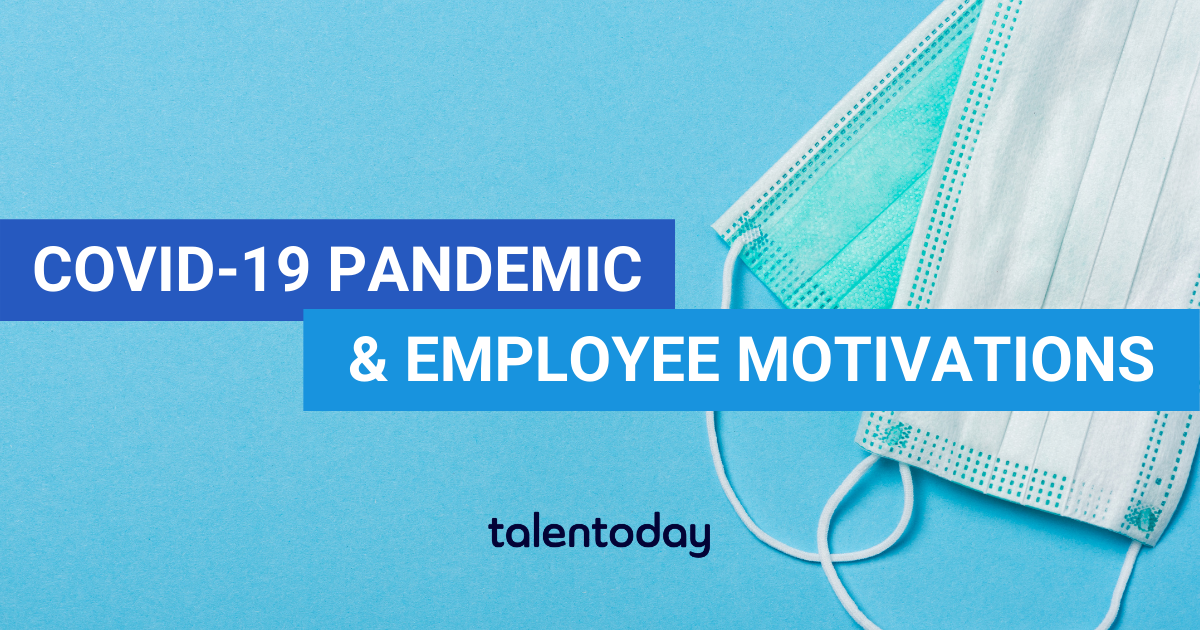
It’s been one year since COVID-19 took the world by storm. Countries started to close their borders and government safety regulations were enforced. As a result of unpredictable lockdown and safety measures, each person’s environment has changed in some way. For millions of typical “office workers” this meant working from home, while those deemed essential continued to go into work with increased risk. With all of this change happening externally, there is internal change that comes with it. How has the move to a remote workspace, social distancing, new health measures, and other pandemic outcomes impacted the things that motivate your employees? Let’s learn more about how motivations work first.
One of the most widely accepted motivation theories is Maslow’s Hierarchy of Needs. You may recognize the motivation pyramid that has found its way into most every psychology, marketing, and ethics textbook, and it is the foundation for the Talentobe MyPrint motivation dimensions as well! There are five stages of motivation included in the pyramid: physiological needs, safety needs, love and belongingness needs, esteem needs, and self-actualization needs. The basis of Maslow’s theory is that everyone starts at the bottom stage of the pyramid with their most basic physiological needs: food, water, clothing, and shelter. Once those needs are met, we are able to work our way up to safety, and so on.
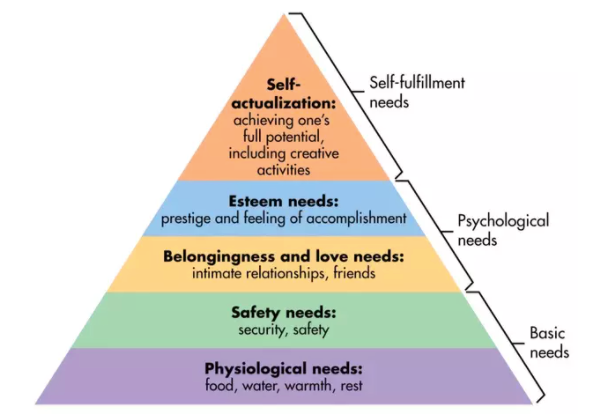
Our environment plays a huge role in our motivations and where we’re at on the pyramid. For example, during the COVID-19 pandemic, we have seen a lot of people focus on addressing their basic safety needs, like employment and financial stability. Other factors that can impact our motivations include, but are not limited to, changes to our work environment, major family events such as births or deaths, changes in our relationship status, living situations, or unforeseen financial events.
Motivations and MyPrint®
Since we know that motivations are so dependent on our environment, we decided to take a look at how the COVID-19 pandemic has impacted the motivations found in MyPrint®. To do this, we calculated the motivations that saw the biggest increase amongst assessment takers before and after March 2020. We observed three dimensions that had a larger increase than the others: Recognition, Responsibility, and Excitement.
Recognition: Need for External Recognition
People who have a need for external recognition are driven to work harder when they receive positive feedback and praise from coworkers. When working in an office environment, this will naturally happen more frequently; you tell an employee they did great on a presentation while passing their desk, or congratulate a coworker on hitting a milestone while you’re getting your morning coffee. However, in a remote environment, we need to be more intentional about giving that recognition. Since March 2020, a total of 81% of the global workforce has had their workplace fully or partly closed. Whether this impacts someone directly, or if they are seeing this happen with their friends and loved ones, receiving that external recognition can help to reassure individuals that they are doing a good job and motivate them to continue the good work.
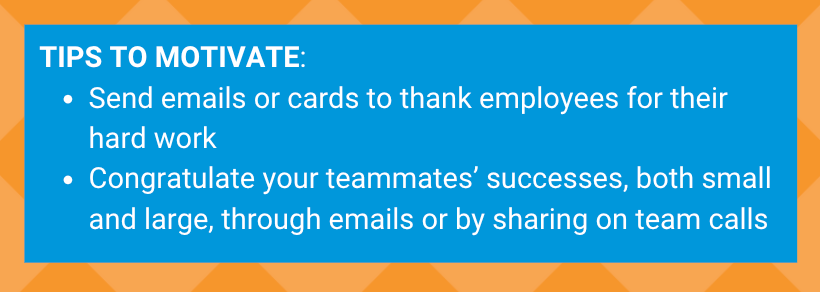
Responsibility: Need for Taking Personal Responsibility
People who have a need for taking personal responsibility are comfortable being held accountable for others’ actions, regardless of error or failure, and are more comfortable being accountable for their own work as well. Moving into a remote work environment means that individuals need to take on more personal responsibilities than they did before: from managing all of their time to taking on pieces of projects that they might not have needed to before. For some people, having more control over their work environment can create that drive to keep them motivated at work.
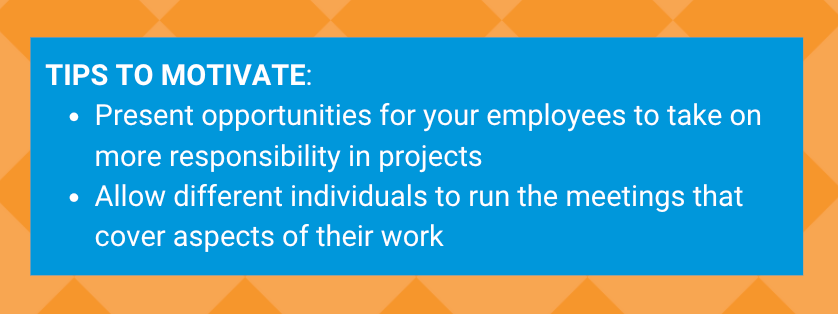
Excitement: Need for Adventure
People with a need for adventure are driven by situations that offer thrill, seek to take risks and are very tolerant of unpredictable situations. A lot of people have experienced a more stagnant environment since March of 2020. Whether it is due to stay at home orders, travel restrictions, or lack of a commute, we are all going through it. Because of this, it is not surprising that people are craving more adventure in their lives. Work can be a great place to create excitement — from new opportunities to new roles or training, providing an environment where employees can take more risks and try new things can lead to a more engaged workforce.
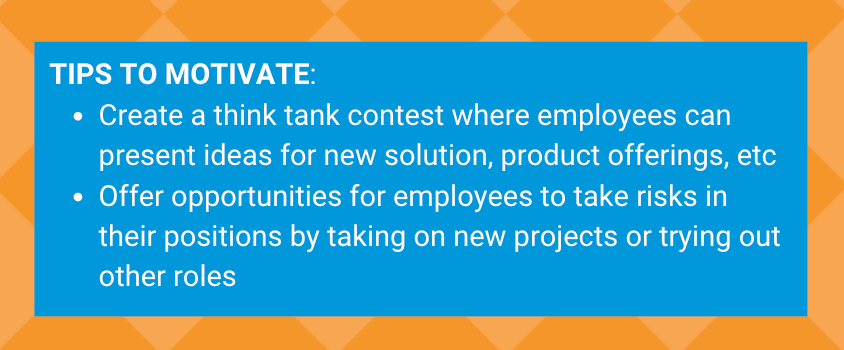
Check In With Your Workforce
Your workforce is going to evolve over time, and it is important to keep up with those changes! Whether it’s a global pandemic to impact the shift in motivations, or if it’s typical life events taking place, you want to make sure that you are evolving alongside your employees. Changes to an employee’s motivations means adjusting your management style, and by keeping up with these changes, you can create the most engaging environment for your workforce as possible.
We recommend employees take the MyPrint assessment every 6–12 months. Interested in learning more about MyPrint and how our solutions can help you better understand your workforce? Contact Talentobe at customer@talentobe.com to learn more about our assessment and services!
Build Your Team Using Soft Skills
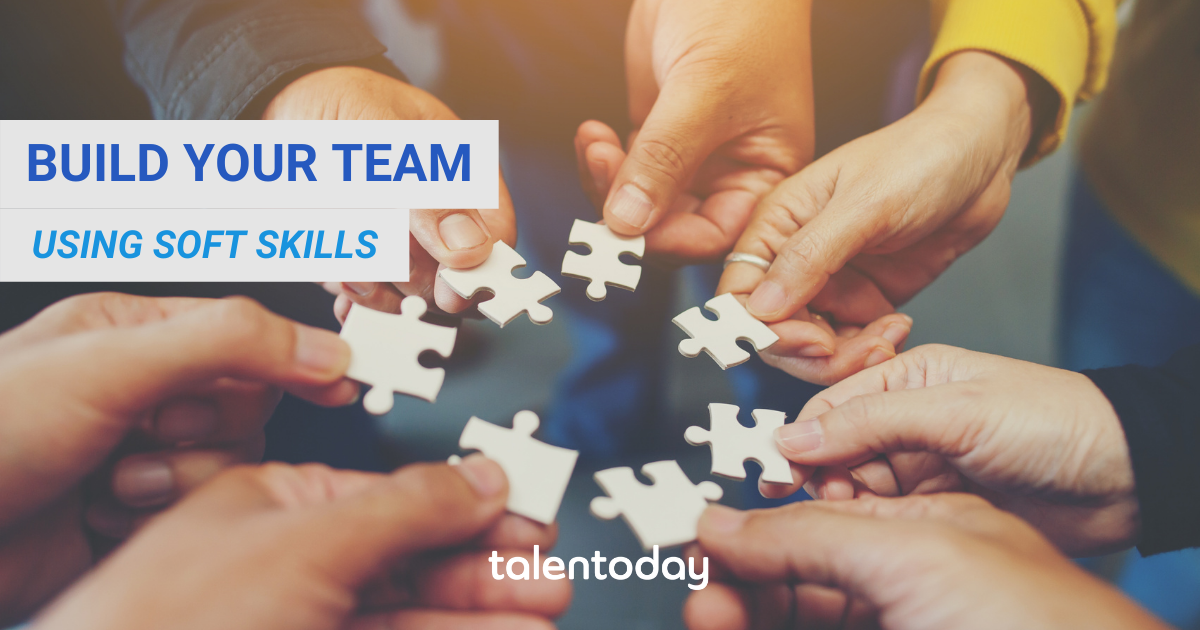
In the pandemic-impacted spring of 2020, puzzle sales were up 300% from the year prior¹. I have to admit that I contributed more than my share to that increase in sales; you can only watch so much Netflix before you need to find a new in-home activity!
What I’m trying to say is that I spent a lot of time in front of puzzles this year and I’ve learned one valuable lesson: teams are a lot like puzzles. That is our metaphor for today.
We don’t always know what our missing pieces will look like
When you are looking for the perfect piece for your puzzle you might have the exact picture of what you are looking for in your head. You know what the surrounding pieces look like (what their strengths are) and you just need to find the piece that looks like those ones. The problem with putting too many constraints on what we want is that oftentimes as human beings we’re wrong. Although there might be certain characteristics that we know we need for a position, that doesn’t mean that we know all of the important aspects.
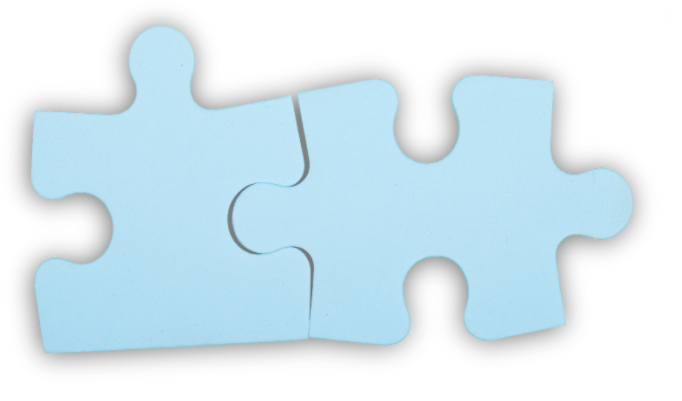
When interviewing candidates, it might seem like we know exactly what soft skills are needed for success. After all, why wouldn’t you just find someone who looks just like your top performers? To start, there are a lot of positions where two opposing traits can come in handy! Someone who is extroverted can be just as successful in a position as someone who is introverted. Same goes for people who are patient versus being eager, or imaginative versus practical. That brings us to our next point — similarities and differences.
Some pieces look similar, but the differences in pieces are what create the whole picture
When every person on your team thinks exactly the same way, you lose something very important in teamwork: Diversity of Thought². When hearing this term you might automatically think of gender, race, background, or age. While all of these things are important, another aspect of diversity can come in when looking at — that’s right — soft skills.
When teams are collaborating on a project there are aspects of their personality or motivations that can be helpful to have similarities in. However, if you have a team full of extroverted people, you might find it hard to get on track. If your team is full of big picture thinkers, you might find yourself with a lot of ideas and not a lot of action items. If everyone on the team is very precise, you might end up spending more time on the details than necessary. Find the gaps in your team and keep that in mind when you are looking for new people to join your organization.
Each piece is unique and has a place, even if it’s not where you originally thought
Let’s say you hire an individual who you thought was the perfect fit for a team and they’re not doing quite as well as you thought. Before giving up on that person take some time to get to know their soft skills. What are their personality strengths? Are you utilizing these strengths in their position? Do these strengths have a place in their current position in the team? What motivates this person? Are you fulfilling those motivations as a manager or teammate, or is their work fulfilling those motivations?
See if there is another place where that individual can thrive, even if there are some skill gaps to address. People are the most important asset to an organization³ so before getting rid of a good hire, see if they were just in the wrong position.
Once your pieces are where they belong, you can create something amazing!
Every person is unique. Even when there are shared qualities within a team nobody thinks, is motivated, or behaves in the exact same way. Those differences are what make a team stronger, more creative, and ready to tackle whatever challenges they might face!
Using MyPrint® to put together your team
For more ways to understand your team’s soft skills on an individual and group level, check out our MyPrint® assessment and keep reading to learn more about some of our features included in the Talentobe Manager platform!
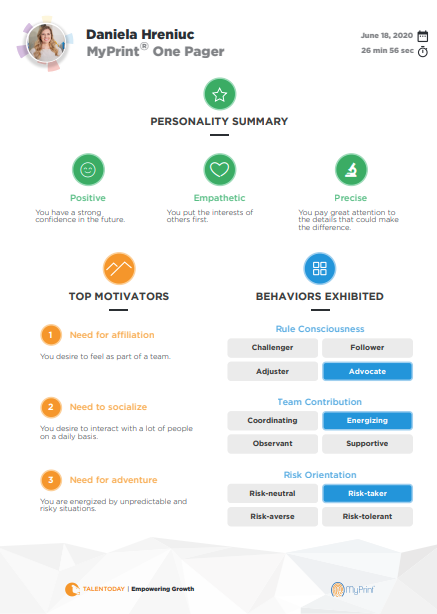
One Pager: Use this one page summary of an individual’s results to see their top 3 personality strengths, top 3 motivators, and 3 most prominent professional behaviors.
Premium Report: This 20+ page report gives in depth information about every personality and motivation dimension that is measured in the MyPrint® assessment, including strengths and tips to working with that individual. Additional information about the 11 professional behaviors are included, along with suggested interview questions to help you go more in depth when getting to know someone!
Collaboration Report: View two individuals’ most similar and different personality traits, as well as top motivators and behavior synergies in a side-by-side comparison.
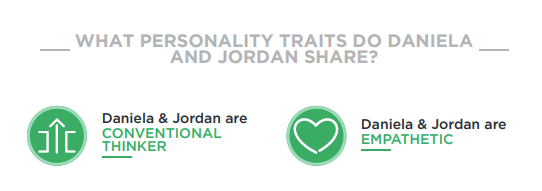

Target Profiles: Use pre-made templates or create your own target profile to see where your team has similarities. From there you can determine if these traits are beneficial to the position, or use this tool to determine the soft skill gaps in your team!
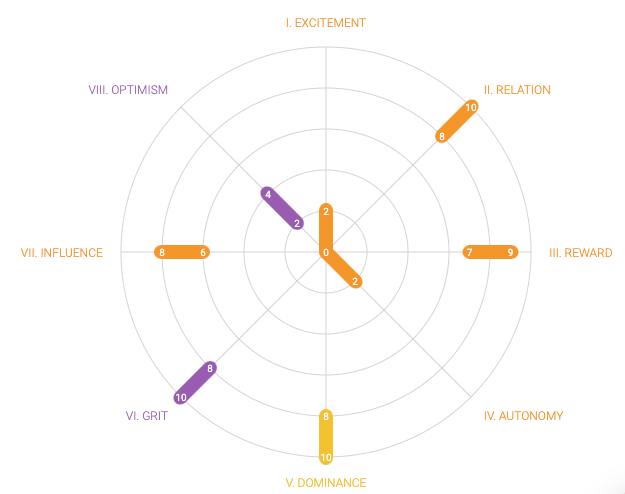
Stay tuned for some new, exciting features in 2021! Get more insights on your team as a whole on all personality and motivation dimensions, as well as understanding how individuals’ behaviors synergize with one another.
Looking for additional resources and support? Email Talentobe at customer@talentobe.com to learn more about our assessment and services!
Sources
²https://www.businessinsider.com/the-future-of-workplace-diversity-is-here-2013-9
Introducing the MyPrint® Assessment

Think about your first cell phone. What features did it have? What technology has remained consistent, and what has evolved over time? Would you prefer to be using that same technology today?
Just as our cell phones change over time, other things in our lives evolve as we grow in our abilities and develop as a society. Among those is our soft-skills assessment here at Talentobe!
mYti© to MyPrint®
If you have been a member of our Talentobe community, then you’ve probably experienced the mYti© assessment, our original personality and motivations questionnaire. If you visit our website today, you will see the latest innovation in Talentobe’s science, MyPrint®, our brand new soft skills assessment. MyPrint® still measures personality and motivations but in an even more accurate way than before!
Theoretical Background
The theoretical background of the MyPrint® assessment is based on long-standing theories of personality and motivations within the psychology community. The personality dimensions are based on the Five-Factor Model of personality, which is considered the standard in personality trait measurement across cultures and has been proven reliable by more than 40 years of research¹. Our motivation dimensions are derived from Maslow’s Hierarchy of Needs² and the Self Determination Theory³, both of which left a strong legacy in the definition and measurement of motivational factors⁴.
Our Dimensions
Think back to our cell phone analogy. Your first phone probably had a lot of the same features that your phone has today (such as texting and calling capabilities) but they might look a little bit different; for example, now most cell phones have the ability to voice text or video call.
In the same way, the MyPrint® assessment has a lot of the same features as the mYti©. These features may look different, however. For example, we are still measuring personality and motivations and providing information about professional behaviors. Some of our scales have remained the same, such as Patience, and others are simply represented in a new way. For example, the Creativity scale is no longer a part of the personality radar, but it can still be found in our professional behaviors. With this change, we have been able to simplify our personality radar and motivation chart, without compromising member results.
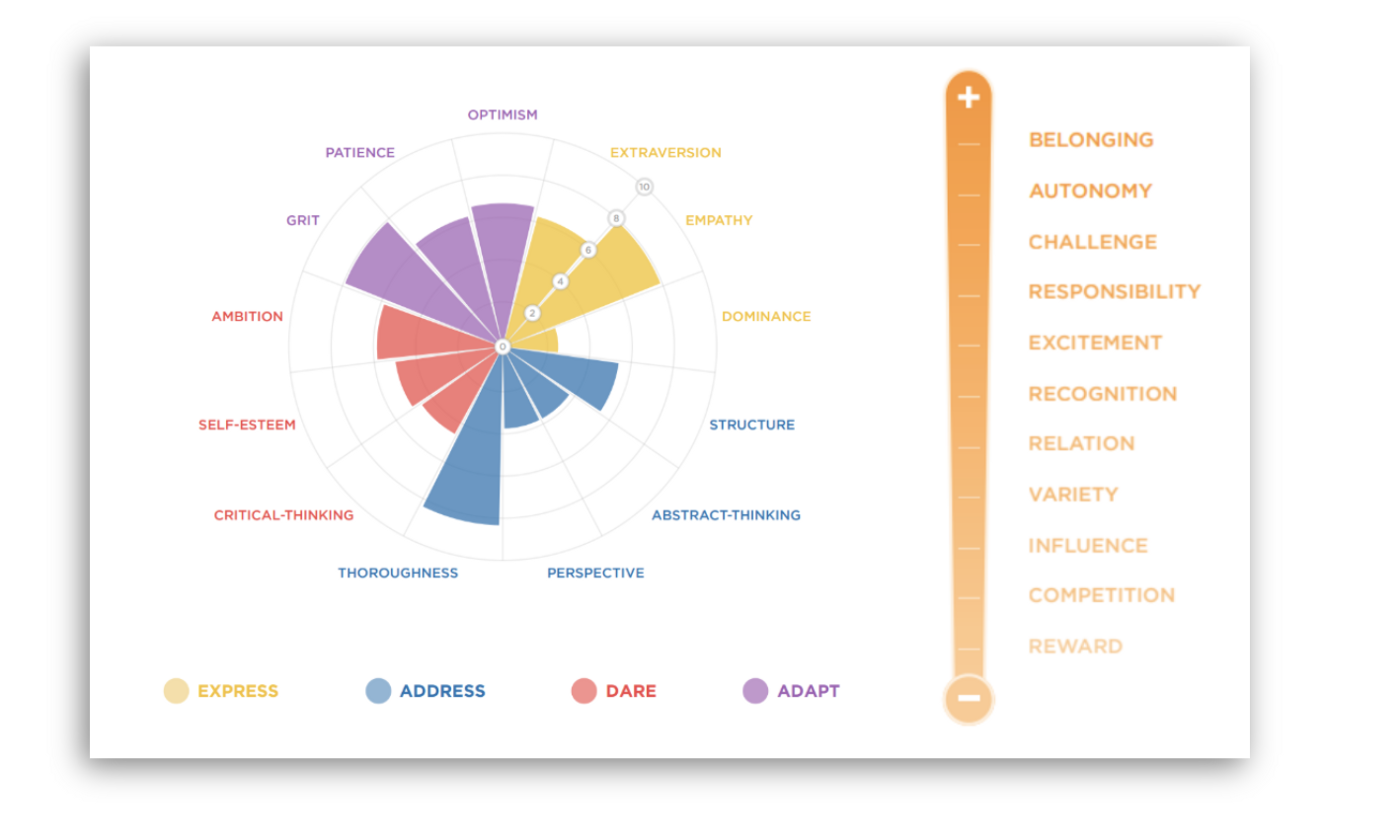
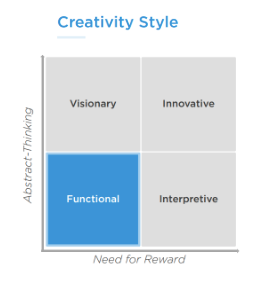
Our Science
In addition to the scales and dimensions that we have updated, you might also notice that the questionnaire itself has changed. This is because we have updated the “behind the scenes” statistics and calculations for the assessment to use cutting edge technology, a lot like what happens when your phone receives a software update.
Just like the mYti© assessment, the MyPrint® uses “forced-choice” questions. This format provides two statements that are equally desirable, so it takes away what is called the Social Desirability Bias of trying to find the “right answer” to the questionnaire and gives the user the freedom to answer in the most truthful way possible.
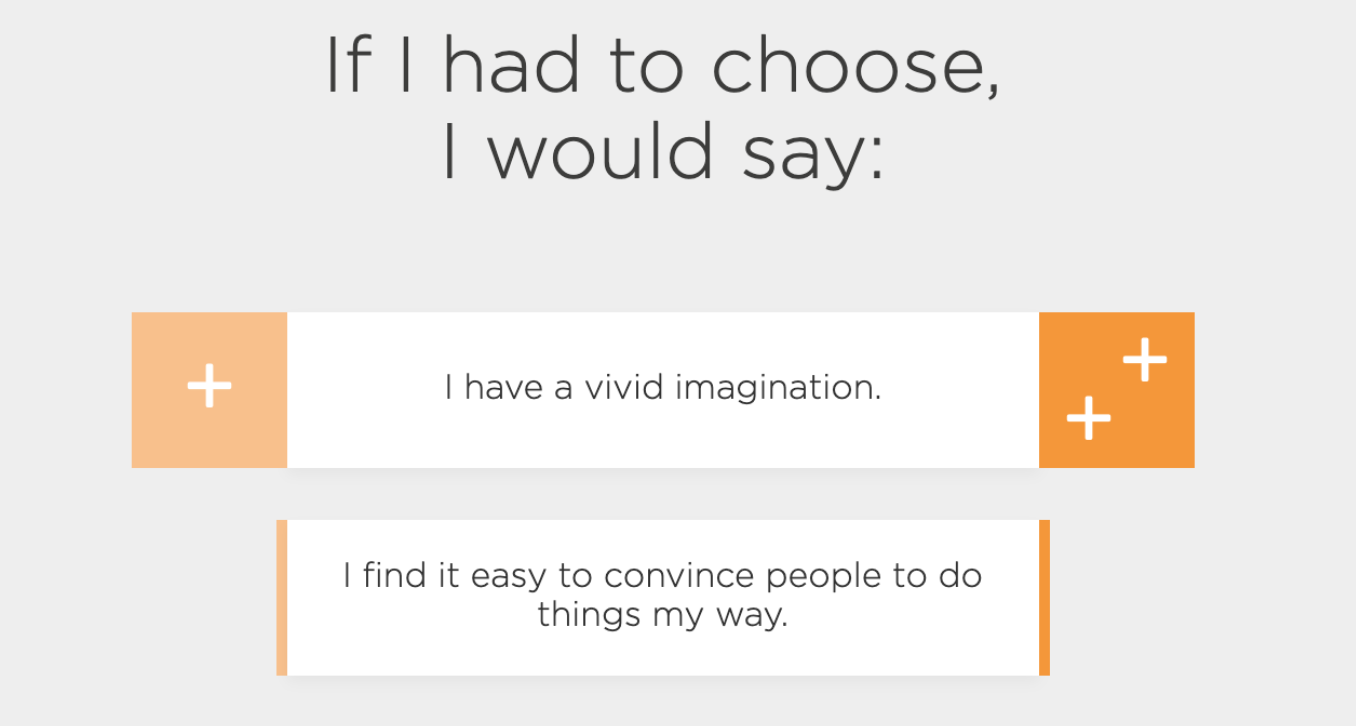
The MyPrint® questionnaire takes the forced-choice question format one step further to not only have the user choose the statement that fits them the best, but to indicate to which extent that statement better suits them. This concept is called “multidimensional binary forced-choice with graded preferences” — one of the most recent and useful innovations in psychometrics⁵. More importantly, this is how Talentobe is able to achieve greater accuracy through developing our new MyPrint soft-skills assessment.
Experience the MyPrint®
The best part about a new phone is getting to try it out and see all of the new features! Now that you know more about our updated product, try it for yourself! Visit www.talentoday.com and take the MyPrint® assessment. If you want to learn more about our science click here and download the MyPrint® Technical Manual!
If you’re interested in your own one page report, premium report or in learning more information about Talentobe, please visit www.talentoday.com or contact our experts at contact@talentobe.com.
¹ Barrick, M. R., & Mount, M. K. (1991). The Big Five personality dimensions and job performance: A meta-analysis. Personnel Psychology, 44(1), 1–26.
² Maslow, A. H. (1943). A theory of human motivation. Psychological Review, 50(4), 370‐396.
³ Deci, E. L. & Ryan, R. M. (2000). Self-determination theory and the facilitation of intrinsic motivation, social development, and well-being. American Psychologist, 55, 68–78.
⁴ Costa, P. T., & McCrae, R. R. (1985). The NEO Personality Inventory manual. Odessa, FL: Psychological Assessment Resources.
⁵ Brown, A., & Maydeu-Olivares, A. (2017): Ordinal Factor Analysis of Graded-Preference Questionnaire Data. Structural Equation Modeling: A Multidisciplinary Journal, 25(4), 516–529.
Use MyPrint® to Engage Your Remote Workforce
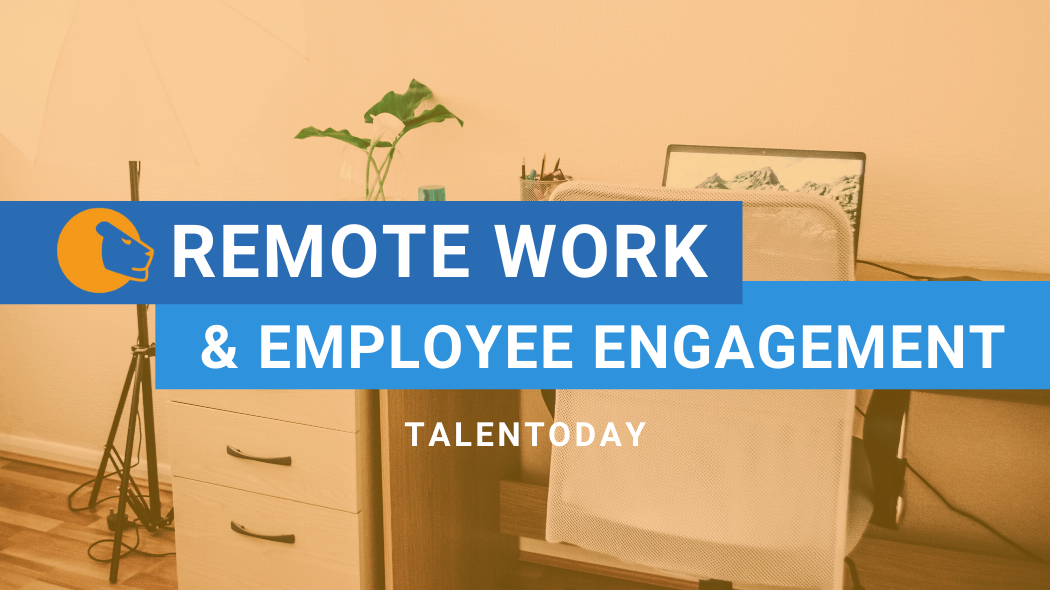
In the early months of 2020, HR professionals and managers have been faced with the biggest unilateral shakeup that doesn’t discriminate against industry or country borders, the COVID19 global pandemic. Workplaces with previously strict or conservative remote work policies may find themselves in a non-negotiable situation as “social distancing” is the new norm; that of course, is if you’re lucky enough to work in an industry or position that allows you the ability to work from home. While some may find themselves out of work, others are on the frontline of the pandemic, such as medical staff and grocery store workers. For managers creating an office at home, it poses the question: how do I be present and engage my team virtually?
At Talentobe, we have a passion for unlocking the keys to employee engagement, management and teamwork, which is the driving force behind our MyPrint® assessment. Through our assessment, coupled with our web application, we offer digital solutions to managers for effectively engaging their team. While our assessment wasn’t originally designed to provide instructions for remote team management through soft skills, we’ve been able to identify the direct correlation between results and how to put this knowledge to use in a remote work setting. The below is a step-by-step guide, with advice, on how to leverage assessment results for your remote team.
Step 1: Have your team spend 20–30 minutes completing the MyPrint® assessment.
Immediately after completing the assessment, they’ll have access to their personality radar, motivations and professional behaviors. While some of your team may additionally be experiencing a period of self-isolation, or having limited social exposure, this allows for dedicated time for a bit of self-care and self-reflection, by allowing them to take a deep look into their strengths (or potentially some areas they could seek additional training during this remote period).
Step 2: Look at the unique motivations across your team and figure out what motivates, and discourages, your team.
Working from home, coupled with isolation, some may experience a lag in productivity and engagement. As a manager, this allows you the opportunity to step in and rally for success. Within the motivation poles, managers are given tailored guidance based on individual results for what motivates an employee, as well as insight on what can discourage them. See below for an example:
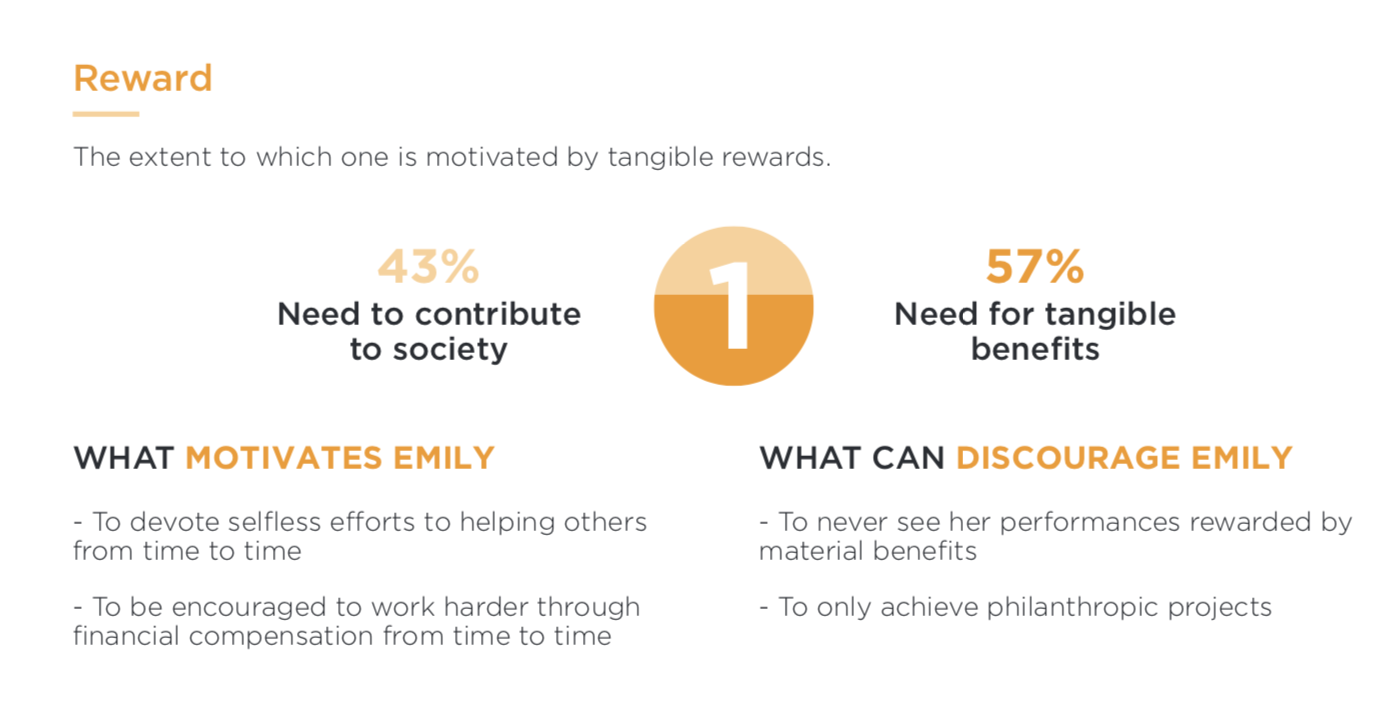
Step 3: Start tailoring motivation to individual results and empower an engaged remote workforce.
After taking a look at your teams’ results, you’ll notice that there are 11 motivation categories, with two different criteria for each motivation. We refer to these criteria as either the “positive side,” at the high end of the pole, and the other as the “negative side,” with it being on the lowest end of the pole.
In the below graphic, you’ll see engagement examples that align to both the “positive” and “negative” sides of the poles to help tailor motivations to individuals on your team.
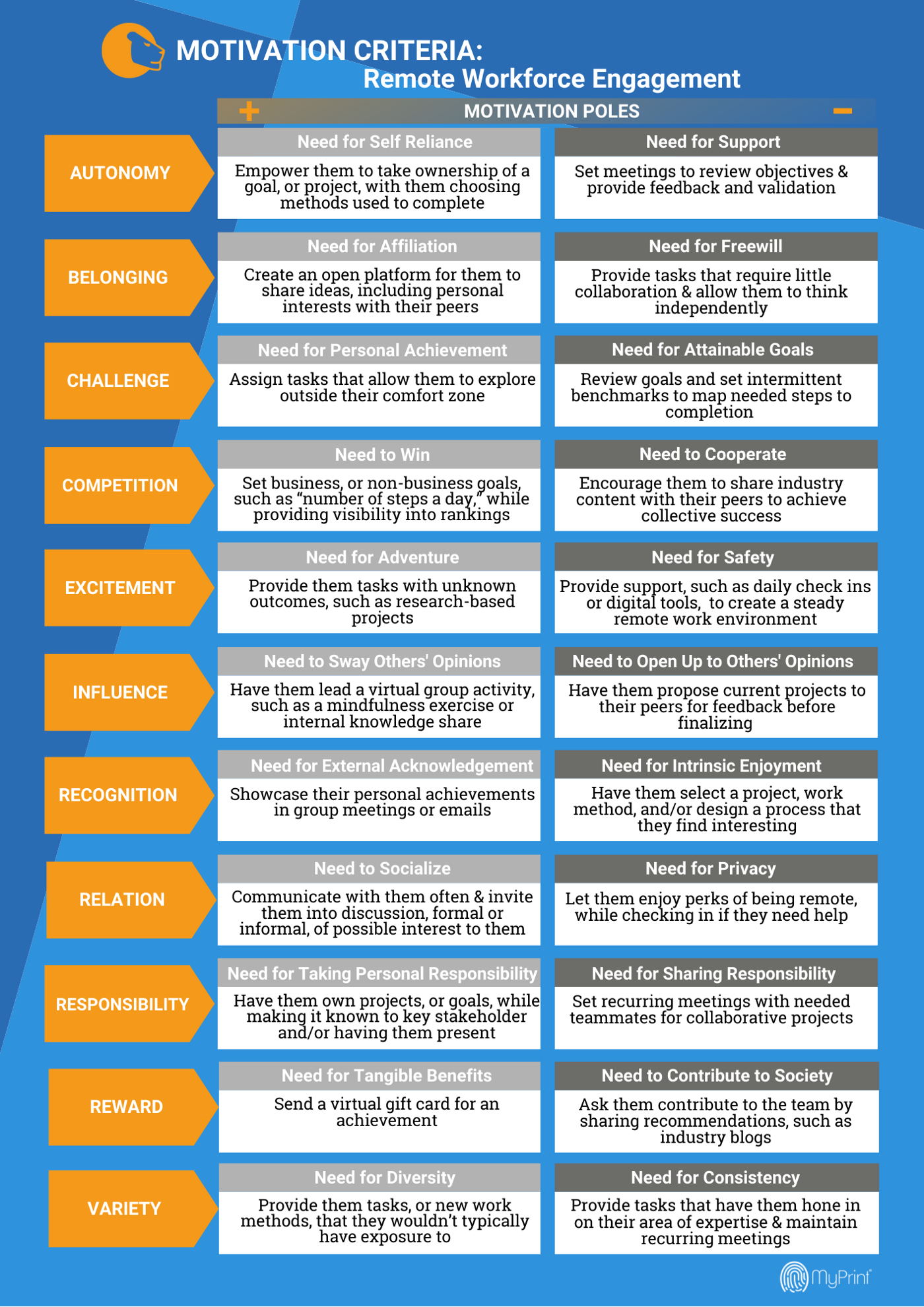
Long after the COVID19 pandemic is behind us, Talentobe will still continue to provide quality solutions that help professionals make empowered decisions through data analytics. To keep building on the momentum sparked through remote work engagement, our solution offers additional features and insights; whether it’s learning how to best collaborate with another individual or asking more meaningful interview questions tailored to their MyPrint® results, we look forward to continuing to serve our global community and provide purpose during this time of uncertainty.
Ready to take the MyPrint® assessment? Set aside 25 minutes, in a non-distracting space, and click “Take the free test” on Talentobe’s website (www.talentoday.com).
For more information on Talentobe and how to utilize our reports and features, reach out to us directly at customer@talentobe.com for both existing and prospective customers. For more information about our science and product, visit our company website.
3 things you must do before hiring candidates
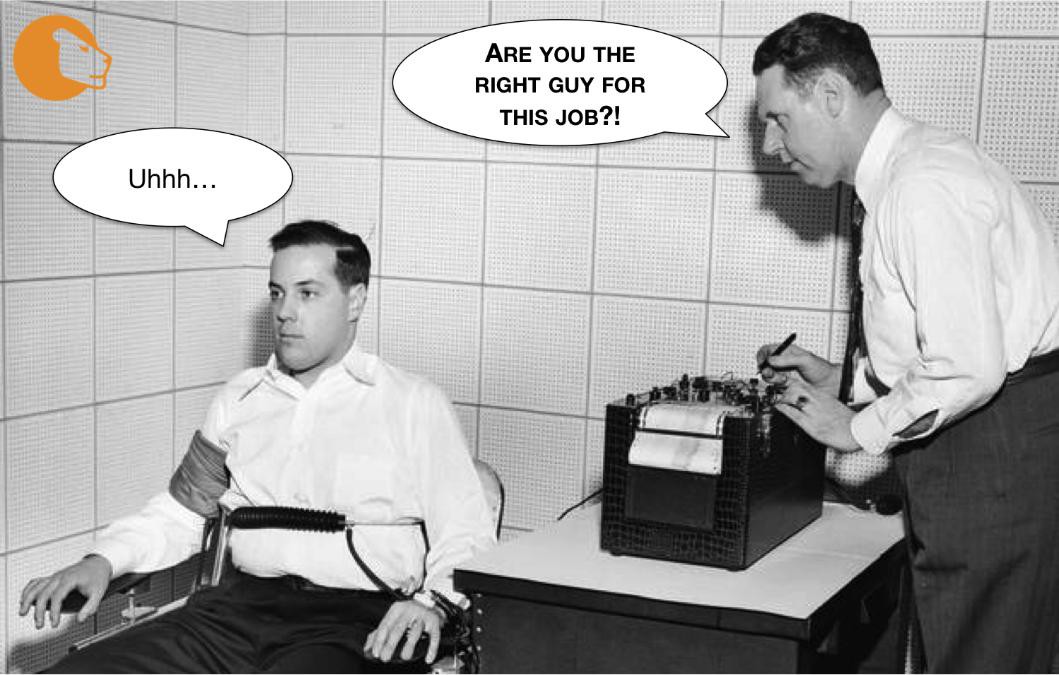
Every manager, HR professional and recruiter faces the same question: Am I recruiting the right candidate for this position? It became essential to be able to discover and acknowledge the value of your future employees and the way they will match to the job position in our fast-paced and technology driven world. Performance is directly correlated to the fit between your candidate’s skills, personality and motivation but also to your company culture, requirements for the job, team members already in place, etc.
Here are the 3 things you need to do:
1 — Evaluate their skills
You want to explore the knowledge and cognizance of every individual, or what the person knows how to do. The skills and aptitudes of a person are usually identified in resumes, diplomas, and experiences. These can also be distinguished via aptitude tests, performance tests, real-life simulations or exercises. Before the meeting, it’s essential to take note of the exact tasks, responsibilities and tools the future employee will have to do, use or learn.
2 — Explore their personalities
This point is crucial and it is the center of the assessment process, in meetings between a recruiter and a candidate. It is not groundbreaking to acknowledge that there is a strong correlation between personality fit and performance in a career. Personality is a complex concept that can be explored in many complementary ways.
We can evaluate it by using personality tests, and with previous employers recommendations, 360-degree feedback or in a well-conducted face-to-face semi-directive interview. The main advantage of using personality tests for interviews (when they are serious!) is that they allow for the standardization and normalization of assessments between different people. Nowadays most are online, easy-to-use and inexpensive. In a way, they allow you to know your candidates before you meet them.
3 — Understand their motivations
Motivation is the third fundamental element to consider while assessing individuals you wish to recruit. It is so important to be aware of people’s aspirations, to know what they seek in their professional lives, and what motivates them. Candidates must select the organization that interests them, identify the people for whom and with which they work, and enjoy the possibilities offered. Every career opportunity must also fit the career plan of the applicant. For example, you can hire the best talent to work for Salesforce.com, but if he is not motivated by the tasks, he will not perform his best, and will leave the company earlier than expected.
If you wish to hire applicants who fit the open position and company culture, make sure you take these points into consideration. While you are free to select a candidate, applicants also choose the company and the people they will work for, their preferred position, and the working framework that matches their expectations.
Adopt the best practices for recruitment and download our free 20 page guide on assessing and selecting talents.
Engineers vs. Business people: A War of Talent
Both engineers and business people are believed to be some of the most intelligent professionals in the world, embracing and conquering a large wealth of skills and knowledge. But which group of them will adapt their behaviors and personality to meet the social demands of the workplace? In such a competitive professional world, it is these talents that lead to the success of an individual. A study of Talentobe’s results database reveals the differing “Soft Skills” adopted by engineers and business people. It is not surprising to see that there are certain inclinations and differences within the results, since ultimately, everyone is unique. Personalities and motivations that distinguish us as individuals will naturally complement particular careers.
The following statistics indicate the trends identified by the study.
What motivates students today?
“Crisis”, from the Greek krisis: the judgment. As the economic crisis hits countries around the world, new generations of potential executives of both Europe and the United States, in the twilight of their studies and at the dawn of their careers, face an additional attack. An identity crisis, a judgment whose verdict is hopeless, “whatever my education or my degree, I must be aware of the economic realities and adapt to the demands of the workplace.”
Prepared for the future, qualifications in-hand, and technical skills proven, young graduates must stand out in a global labor market. Their distinguishing factor above all… is their personality. From a company’s perspective, what differentiates two young MIT graduates both able to use Python programming language, if not the behaviors they will adopt in a job? Will they be team players? What is their motivation: variety of tasks or money?
Si vis pacem, para bellum “If you want peace, prepare for war.” More than ever, the university is a place for character development, the passageway to the adult world. It supports young people in defining their lifetime ambitions. We strive to provide tangible evidence in order to understand and support a university’s future talent. Know yourself to successfully sell yourself to an employer; know your motivations to choose your future career. Career guidance is the key! That’s why counseling professionals work hard to help students find their way and discover their talent…today!



